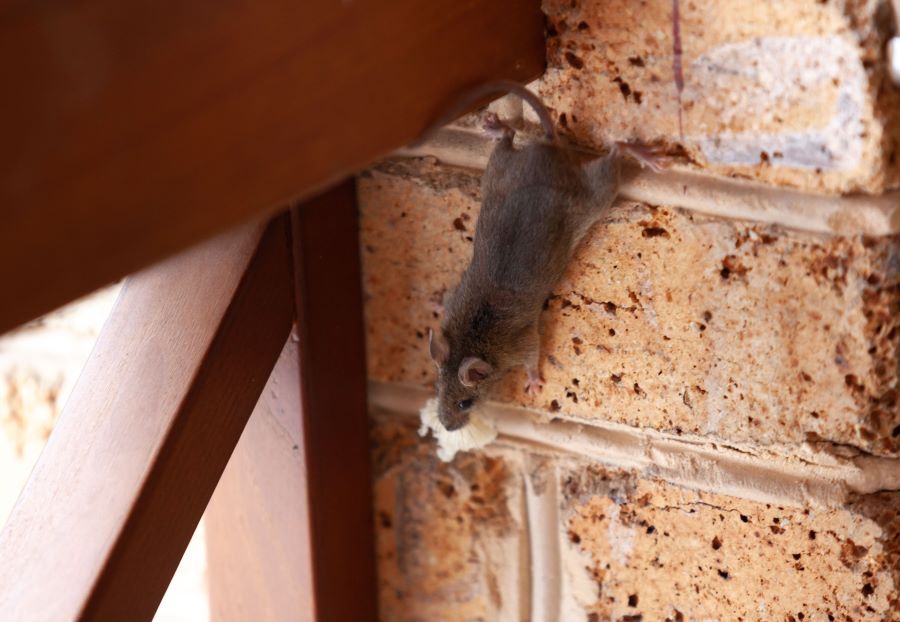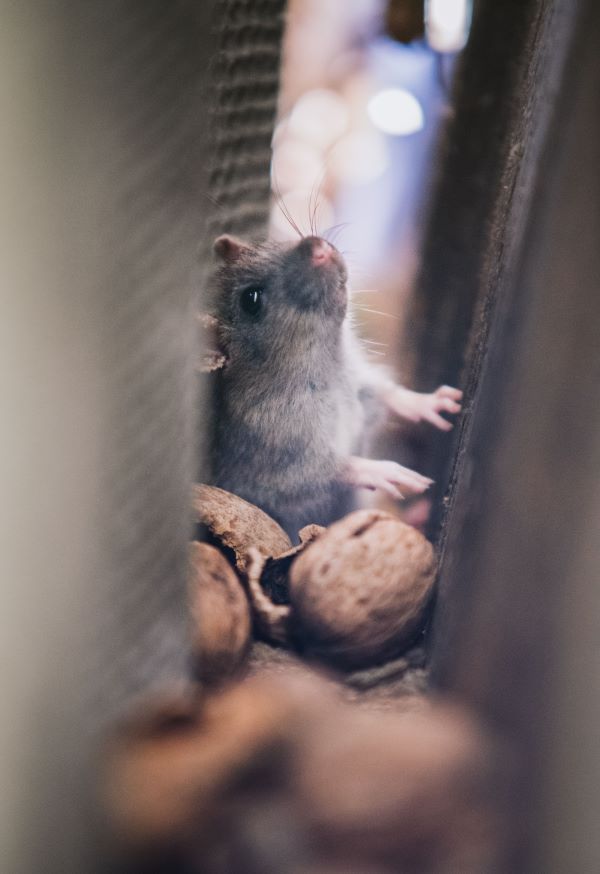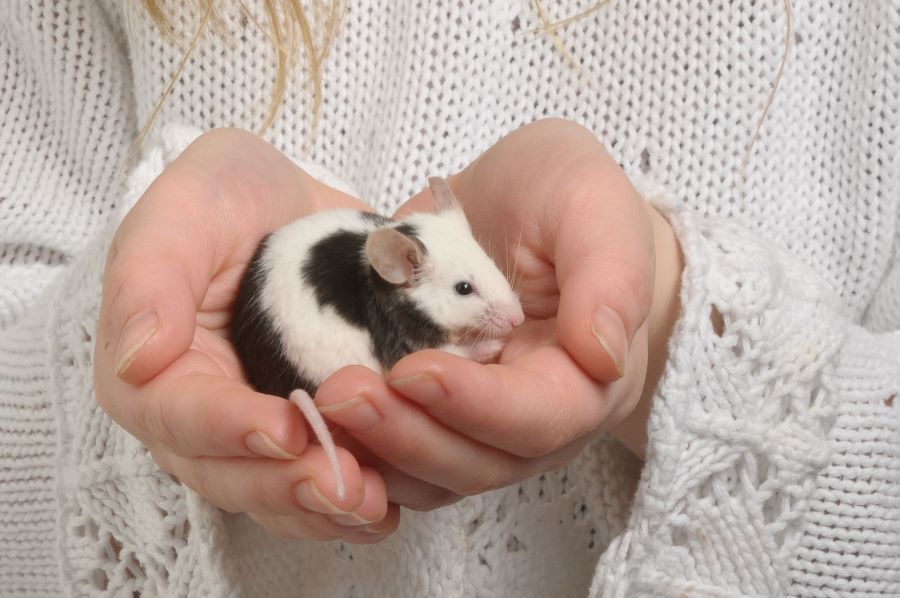Some of the posts on Mercury Pets contain affiliate links to products. That means if you click on that link and then make a purchase, we receive a percentage of the sale. We only recommend products we’ve used and support, and there’s no additional cost to you — the money goes right back into making this site the best it can be! Thanks for reading.

You are asleep when strange noises wake you. You convince yourself it is just the wind outside, but the sounds appear to be coming from your walls.
You will be happy to know that your house is probably not haunted!
However, the bad news is that it is highly likely you have a mouse infestation. So, what do mice sound like in walls?
If you have mice in your walls, you will hear a lot of scratching and scuffling. You will possibly hear some squeaking and gnawing noises, too.
So much for the saying “as quiet as a mouse!”
But having mice scurrying around your home is no joke and more than just a nuisance.
They can cause no end of damage to your property, can contaminate food and pose a serious health hazard to both you and your family through the various diseases they carry.
If you think you have a mouse in the house, here’s how to get rid of unwanted house guests and ensure these mice never return!
What Are House Mice?
House mice are small with a slender body and measure roughly 2 to 3 ¼ inches in length, with their tails 3 to 4 inches long. They weigh less than an ounce, and their short hair varies in color from light brown to dark gray.
The head is small with black eyes, a pointed snout, and large ears.
What Do House Mice Eat?
Mice are omnivorous but generally like to eat seeds, grains and fruits and can cause considerable damage to crops and gardens.
Despite the common assumption that these little rodents love cheese, mice prefer food high in carbohydrates and prefer chocolate over cheese!
But mice are not picky when it comes to food.
The house mouse has adapted to urban living and will eat just about anything, nibbling through bags to get to food sources, even eating household items like soap, glue, and paper.
Mice store food when supplies are limited, typically near their nests where it is easily accessible. However, they can go long periods without eating and do not need much water, obtaining all the water they need in their foods.
Are Mice Nocturnal?
Just like us, mice need their sleep. But their sleeping habits are different to ours.
When it comes to asking whether mice are nocturnal, the answer is complicated. You see, although these little creatures appear to come out at night, much depends on their environment.
Mice are at their most active when there is little danger present. In the wild, they are most lively around the hours of dawn and dusk. The light is low at this time, offering these small rodents protection from their predators.
But when it comes to a mouse in the house, they tend to come out at night when the occupants are sleeping.
Mice also have lousy eyesight, being sensitive to bright lights, so that’s another reason why they come out when it is darker.
Instead of using their vision, mice rely on their sense of smell and touch to navigate their way around.
Where Do Mice Sleep In A House?
Mice sleep wherever they have made their nest, which is always in a remote area.
They make their nests using soft materials such as paper, cardboard and rags, and the most common places you will find them are:
• In the walls
• In stored cardboard boxes
• Inside or beneath bathroom and kitchen cabinets
• Under your furniture or in the upholstery of furniture
• In secluded corners of rooms, attics, or garages
• In ceiling voids
• In water heater closets

What Are The Signs I Have Mice In The House?
You may not have seen any mice, but there are some obvious signs you may have a mouse or more in the house.
Evidence that mice have taken up residence in your home are:
• Droppings – Small and dark, shaped like rice, measuring roughly 3 to 8 mm in length, and scattered randomly.
• Scratching noises – Most of these sounds come from the walls or ceiling. You may also hear gnawing or squeaking.
• Grease or dirt marks – Created by their bodies brushing against floors, walls, and skirting on regular routes. Mice rely on these marks to help them find their way around.
• Gnawing – Mouse teeth continuously grow, so they need to gnaw on hard materials to keep them short. Look for bite marks in wires, stored food, wood etc.
• Urine odor – Mice have weak bladders and frequently urinate, creating a strong ammonia-like smell.
• Nests – Found in places such as cavity walls, attics, behind fridges, and under floorboards.
• Live or dead mice – If you spot a mouse during the daytime, it is a clear indicator you have a heavy infestation.
• Food tampering – Mice will eat anything and gnaw through food packages to get to the inside food.
How Do Mice Get Into Your House?
Two things attract mice to a house, and that is food and shelter. When it begins to get cold outside, these little pests are happy to make your home their home. The perfect place to raise a family!
House mice can climb rough vertical surfaces up to two meters in height and are so flexible they can get into your home through a crack or gap no bigger than a coin.
These tiny rodents can jump as high as a foot, which is quite a feat when considering how small they are! A mouse can jump onto your tables, kitchen counters and shelves in their pursuit of food.
Mice are opportunists and will find any way to get into your home. They can get through poorly sealed windows and can sneak in if you leave the front door open. Drainage pipes not properly filled allow mice to make their way through sink or bathtub drains.
How Do You Get Rid Of Mice In Your Home?
If you choose to get rid of the mice yourself, there are a few steps you need to take.
First, eliminate the entry points to stop any more of these little rodents from getting in.
Before you use any traps or baits, you need to figure out where the mice live and build their nests. Look for droppings, gnawed items, shredding and urine stains, and place the traps in these areas.
Use different types of mouse traps like spring traps, electric traps, glue traps and humane traps, as this gives you a better chance of catching them all.
Always wear gloves when handling traps, as mice can detect your scent and stay away from them.
How To Use Mouse Traps
Contrary to popular belief, cheese is not the best food for bait. Use peanut butter, bacon, chocolate, or dried fruit instead. Whatever you choose, only use a pea-sized amount.
Mice scurry around the wall perimeter, so place several mouse traps two to three feet apart, with the trigger end facing the wall. Where possible, place them in secluded areas, such as behind a cabinet.
These tiny rodents are wary of anything new, so you need to make them feel comfortable first for your plan to work.
Place your bait, but do not set the traps for a couple of days. Once you see they have taken the food, you know your lures are in the right place to catch the little pests.
Set different traps with different types of bait to make it a successful night!
Using gloves, dispose of dead mice in your trash can and release any live ones at least 100 feet from your house.
How To Stop Mice From Coming Into Your Home
Here are a few simple tips to prevent mice from entering your home in future:
1. Seal all access points around the exterior of your home using caulk and steel wool.
2. Keep your kitchen clean, storing food in airtight containers.
3. Vacuum crumbs from your floor.
4. Seal your trash cans.
5. Keep outside doors closed.
6. Get a cat!
If you have a mouse infestation and your traps are not working, it is best to call in a professional pest company to find and eliminate them quickly.



